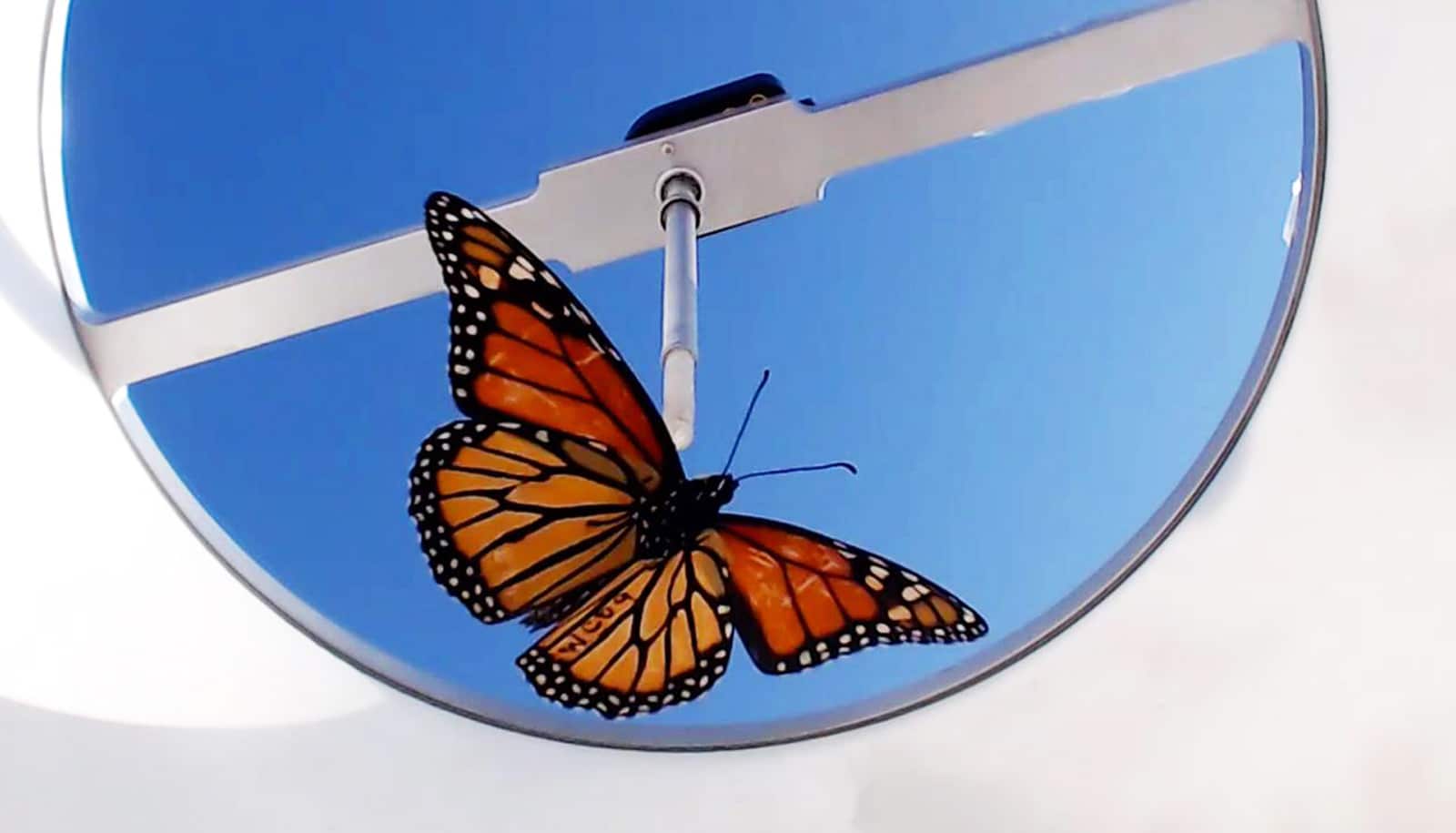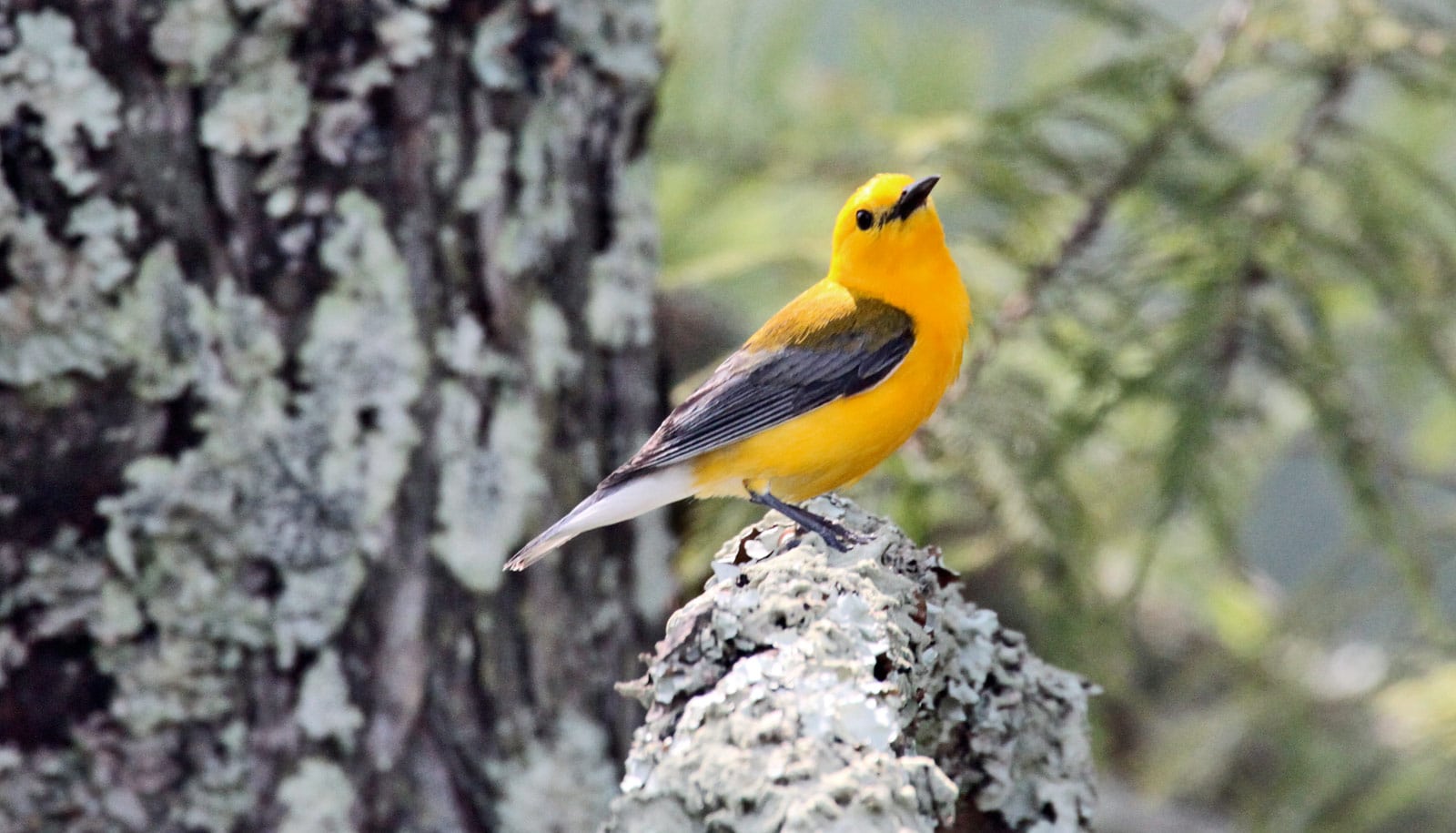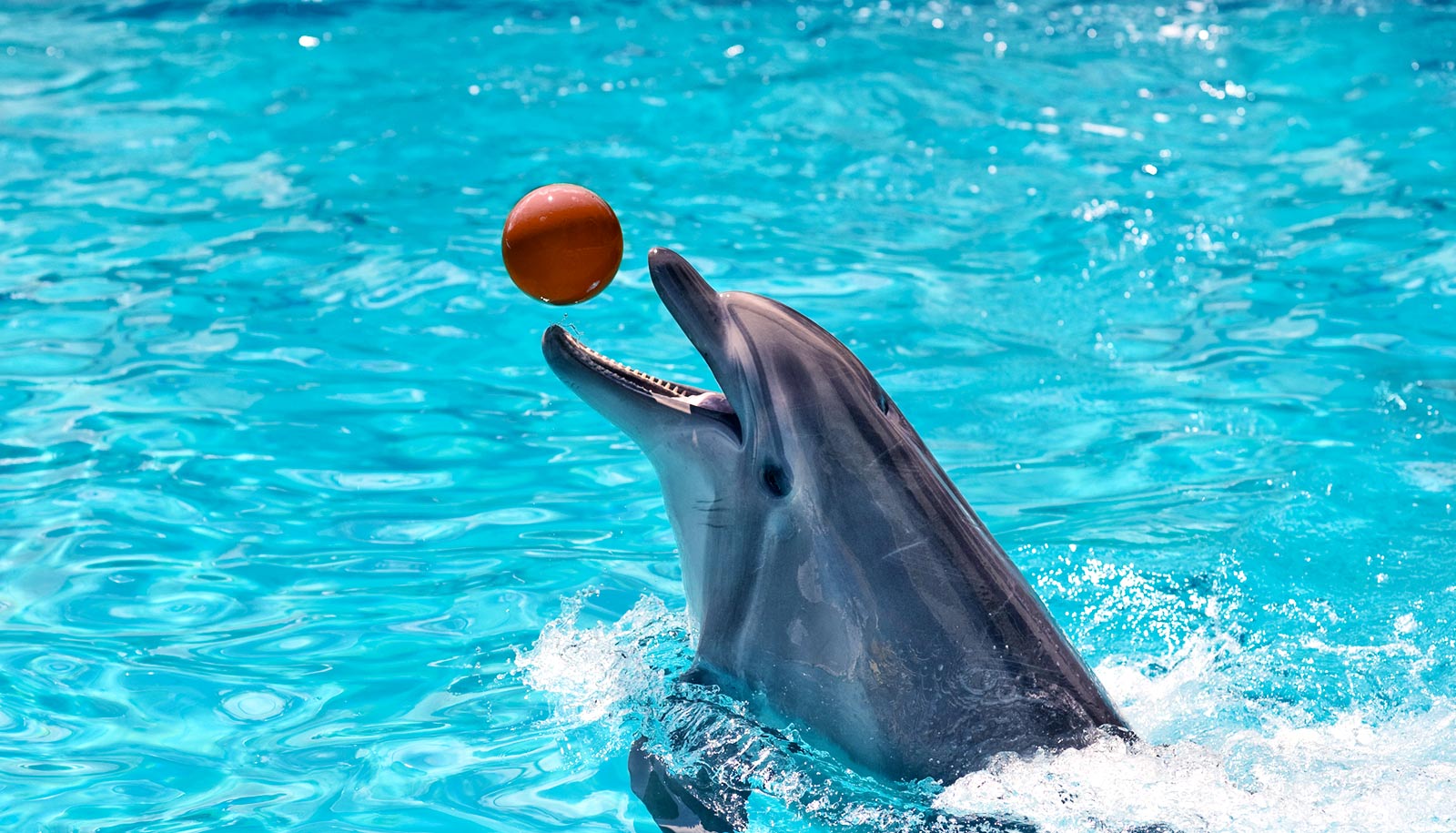Monarch butterflies bred in captivity don’t fly in a southward direction, and neither do their offspring, a new study shows.
Wild-caught monarchs bred indoors under simulated outdoor conditions also don’t orient south, researchers say, suggesting that captive breeding disrupts the monarch’s famous annual migratory behavior.
The North American monarch population has declined 90 percent over the last two decades, according to National Wildlife Federation estimates. As the number of butterflies that reaches their winter habitats in California and Mexico dwindles, monarch enthusiasts have turned to a variety of conservation efforts, including captive breeding and release of the butterflies throughout the summer and autumn.
However, the new study in PNAS shows that these well-intentioned practices may not have the desired effect.
“We hope this will be an avenue into understanding how monarchs are losing migration,” says senior author Marcus Kronforst, associate professor of ecology and evolution at the University of Chicago.
“These monarchs have been brought into captivity and prevented from migrating for many generations, and they have genetically lost migration. It’s a microcosm for what’s happening naturally.”
Monarch flight simulator
Lead author Ayse Tenger-Trolander, a PhD student in Kronforst’s lab, ordered several adult monarch butterflies from a commercial supplier and placed them in an outdoor garden on the rooftop of a building. Researchers enclosed the butterflies in mesh cages but they were otherwise exposed to natural light, temperature, and moisture.
Monarchs breed during the summer and autumn; and it’s the autumn generation that migrates. Tenger-Trolander collected eggs from the commercially purchased adults after they mated and raised them to adult butterflies. That summer generation then became the parents of the autumn generation.
Tenger-Trolander then tested this autumn generation in a “flight simulator,” an open-ended, metal cylinder, like a pipe standing on one end, to see the predominant direction they fly.
Researchers connected the butterflies to a rod near the top opening of the cylinder using a metal pin, or tether, attached to its abdomen. This makes the butterflies fly in place inside the cylinder, but stay free to rotate 360 degrees. A rotating dial records the direction of the butterfly every two milliseconds and saves the data to a computer.
Butterflies that exhibit migratory behavior should fly predominantly toward the south inside the flight simulator. The locally captured monarchs raised in the same gardens did just that. However, the generation of butterflies bred from the commercial monarchs didn’t fly in a dominant direction.
Tenger-Trolander also performed a second set of experiments starting with only wild-caught monarchs and rearing the offspring completely inside. She tried to mimic outdoor conditions by adjusting temperature and the hours of daylight, but as a group, these butterflies did not show signs of migratory flight either.
Some individuals did fly pointing south, but as a group they didn’t collectively fly predominantly in a southward direction. In fact, taking a chrysalis that had been developing outdoors and bringing it inside just as it was about to emerge also “broke” the migratory behavior in the group as a whole.
“I thought there was no way that would matter, but it did,” says Tenger-Trolander. “We know there are many hobbyists and enthusiast breeders who are trying to do their best husbandry and avoid buying from commercial breeders. But there could be an issue with the way they’re raising them indoors too.”
Several populations of monarchs have dispersed throughout the world to Central and South America, the Caribbean, southern Europe, northern Africa, and across the Pacific Ocean to Australia, but none of these new populations migrate like those in North America.
Genetic differences, too
Kronforst and Tenger-Trolander also studied the genetic makeup of the commercially bred butterflies to see how they differ from typical North American monarchs. Is the reason the commercial monarchs don’t migrate because they originated from a newer, non-migrating population?
The genetic analysis showed that the commercially bred butterflies did originate from North America, but they are genetically different enough to count as distinct population, separate from North American or any of the other groups that made it to another continent. Kronforst says he believes the loss of migration lies in these genetic discrepancies.
“We can’t point to a single genetic change that did it because there are lots of them,” he says. “But we think somewhere buried in the genome are changes that have broken it.”
Good intentions gone awry
The US Fish and Wildlife Service is considering whether to list the North American monarch as a threatened species under the US Endangered Species Act.
Any conservation efforts are welcome, the researchers say, and hobbyists raising caterpillars in their gardens or elementary school science classes releasing butterflies into the wild are great ways to engage the public.
But the new study shows that however well-intentioned, monarch enthusiasts should remember that the migratory behavior of these beloved butterflies is incredibly fragile.
“It looks like buying monarchs to raise and release doesn’t contribute to the migratory population, and raising them indoors probably isn’t helpful either,” Kronforst says. “If you want to grow milkweed in your garden and raise monarchs you find around your house, just don’t take them inside. If you keep them outdoors, they should be totally fine.”
Source: University of Chicago



